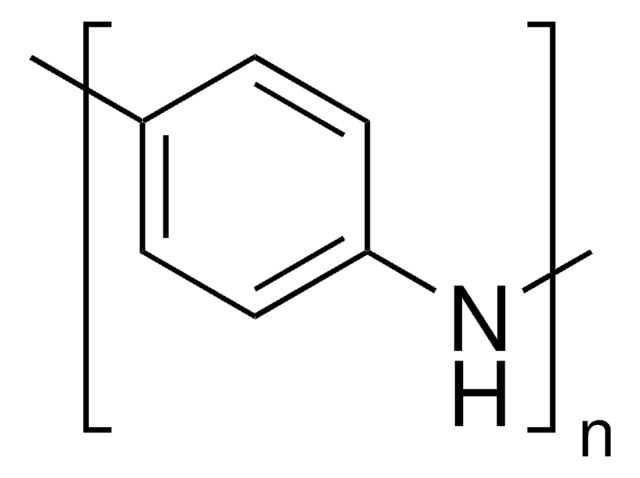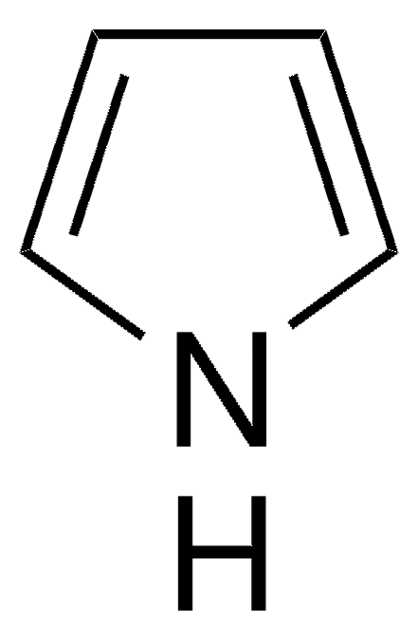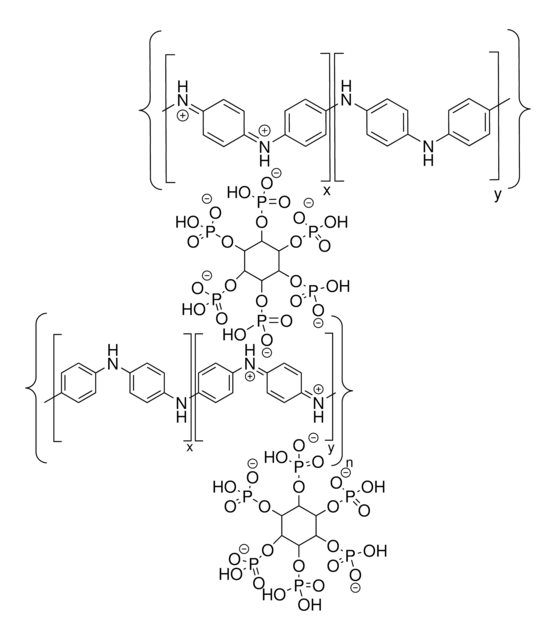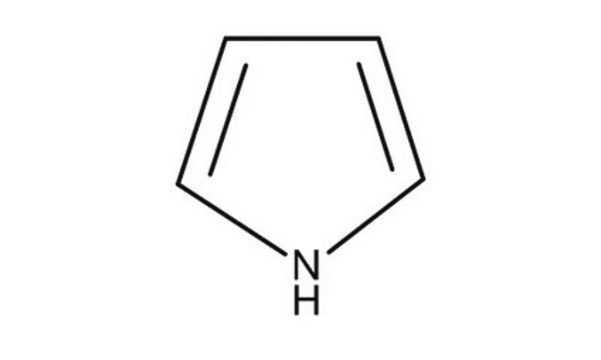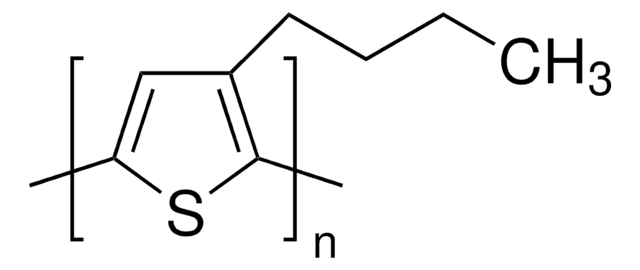482552
Polypyrrole
doped, 5 wt % dispersion in H2O, conductivity >0.005 S/cm (dried cast film)
Synonyme(s) :
PPy
About This Item
Produits recommandés
Contient
proprietary organic acids as dopant
Caractéristiques du produit alternatif plus écologique
Design for Energy Efficiency
Learn more about the Principles of Green Chemistry.
sustainability
Greener Alternative Product
Concentration
5 wt % dispersion in H2O
Autre catégorie plus écologique
InChI
1S/C4H5N/c1-2-4-5-3-1/h1-5H
Clé InChI
KAESVJOAVNADME-UHFFFAOYSA-N
Description générale
- Ion exchange capacity.
- Electrochromic effects.
- Redox activity.
- Corrosion resistant.
- Catalytic activity.
Application
- conductive sensors for quality monitoring
- blended with nanotubes for supercapacitors
- nanowire actuators
- biosensors for drug delivery
- CO2 absorption materials
Conditionnement
Code de la classe de stockage
10 - Combustible liquids
Classe de danger pour l'eau (WGK)
WGK 3
Point d'éclair (°F)
Not applicable
Point d'éclair (°C)
Not applicable
Équipement de protection individuelle
Eyeshields, Gloves, type ABEK (EN14387) respirator filter
Certificats d'analyse (COA)
Recherchez un Certificats d'analyse (COA) en saisissant le numéro de lot du produit. Les numéros de lot figurent sur l'étiquette du produit après les mots "Lot" ou "Batch".
Déjà en possession de ce produit ?
Retrouvez la documentation relative aux produits que vous avez récemment achetés dans la Bibliothèque de documents.
Les clients ont également consulté
Articles
The application of conducting polymers at the interface with biology is an exciting new trend in organic electronics research.
While dye sensitization as the basis for color photography has been accepted for a very long time,1 attempts to use this principle for the conversion of solar light to electricity generally had resulted only in very low photocurrents, below 100 nA/cm2.2
For several decades, the need for an environmentally sustainable and commercially viable source of energy has driven extensive research aimed at achieving high efficiency power generation systems that can be manufactured at low cost.
Notre équipe de scientifiques dispose d'une expérience dans tous les secteurs de la recherche, notamment en sciences de la vie, science des matériaux, synthèse chimique, chromatographie, analyse et dans de nombreux autres domaines..
Contacter notre Service technique

